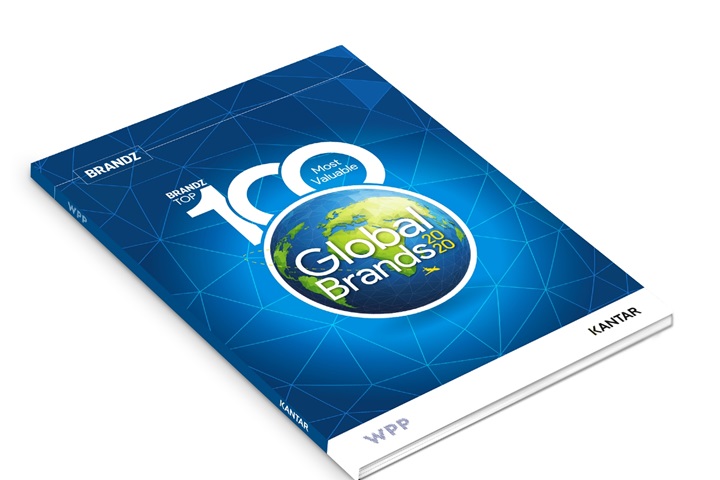Note: This article is part of a collection of the best brand-building and thought leadership articles from our BrandZ reports in 2020. This article can be found in the BrandZ Top 30 Most Valuable Spanish Brands 2020.
“We have suspended all our advertising activity until we see how the ‘bug’ evolves.” Although it may be shocking, even incredible, this was the response we received from one of the advertisers we were targeting in the midst of the pandemic.
This one sentence summarises two major errors – ones we all hope will not be repeated when the next, inevitable crisis arrives.
The first mistake: “suspending advertising activity” (or reducing it to an absolute minimum) can undo all the good work a brand has done in previous years to position it as relevant and different – and in less time than you might think.
One of the consequences of the crisis is an acceleration of many of the processes that were already underway – and changes in consumer behaviour in the face of brand activity. The new context of recovery sends signals to brands; we know from previous crises that those brands that identify these signals promptly and adapt are the ones that become stronger, and those that ignore them tend to – find themselves irrelevant. That is why it is essential to continue launching messages to the market, to be active, so that the consumer knows that the brand is still thinking about them and adapting to the new normality.
Due to the lockdown, many brands lost their sales channels. Beer and soft drinks brands, for example, not only lost sales opportunities when bars and restaurants closed, they also lost many of the touchpoints that helped build brand equity and secure future sales.
Using our Connect benchmark for FMCG categories, we saw that the closure of bars and restaurants, on average, meant a loss of 11% of the impact of touchpoints affecting brand value and future sales. And in addition, the effect of other touchpoints was reduced as the streets were empty, without major sporting events, concerts, etc., thus costing brands up to 26% of possible future sales.
If, in addition, brands panic and cut advertising, stopping investing in TV, for example, they can lose up to 34% of their impact on brand equity, and if they stop all paid advertising, they risk a 42% decrease in the effect of their brand touchpoints on future sales.
Sounds pretty harsh, doesn’t it? From a low of 11% to a bewildering 42%. That is why we insist on the need to continue investing. Compensating for touchpoints you have lost with your own, paid or earned, is not a useless expense, it is a valuable investment when it comes to continuing to build a brand and preparing for future sales. It’s also something that your competition has probably done (directly or indirectly). It is the only way to maintain the brand strength that you have spent so long building.
The second error in that advertiser comment was “waiting to see what happens”, without knowing what consequences would be of a decision to stop investing, which aspects of brand equity would be affected, or which competitors might benefit from their silence.
The evolution of analytics in recent years means we can generate a fairly precise answer to those questions that we have always asked ourselves in relation to our brand:
- What aspects of my image do I have to focus on to increase sales?
- Which media do I have to focus on to grow my brand?
- How can I prove that my marketing investment influences sales?
Using analytical and time-series data, we have simulated three scenarios throughout March 2021 for various real brands in Europe: maintaining their investment, halving it, or stopping advertising entirely.
We modelled brand-linked advertising notoriety data against media spending (using Media to Mind), and then looked at the impact of the same spending scenarios on sales (using Media Pressure).
The impact is fascinating and should make us all think. For a Spanish beer brand, to stop investing would mean losing 13% of its sales and 2.3 percentage points of market share, which we already know is very difficult to recover. If the brand halved its advertising investment, its share of voice would also halve, and there would be a 1 percentage point drop in market share.
What consumers remember about any brand is based on both long-term memories, which have taken months and years to build, and also on short-term memories, influenced mainly by advertising. A drastic cut in the budget will have a significant impact on both. And while brands may get some of that back in the short term when they start investing again, it will take years to repair the damage done to long-term memories.
But it’s not just about the beer market. We have seen the same impact in the automotive and telecommunications sectors. In short, we have all the tools at our fingertips to demonstrate that it is now more essential than ever to continue being present, even if that means changing media channels or communicating in a different, more appropriate way. And let us not forget that we must strive to have the best creative content possible and plan for the long term: generating an impact that will help brands through the recovery period and beyond, for the long term.
For more perspectives and insight like this, check out the BrandZ Top 30 Most Valuable Spanish Brands 2020 report, and the BrandZ Top 100 Most Valuable Global Brands 2020 report.


